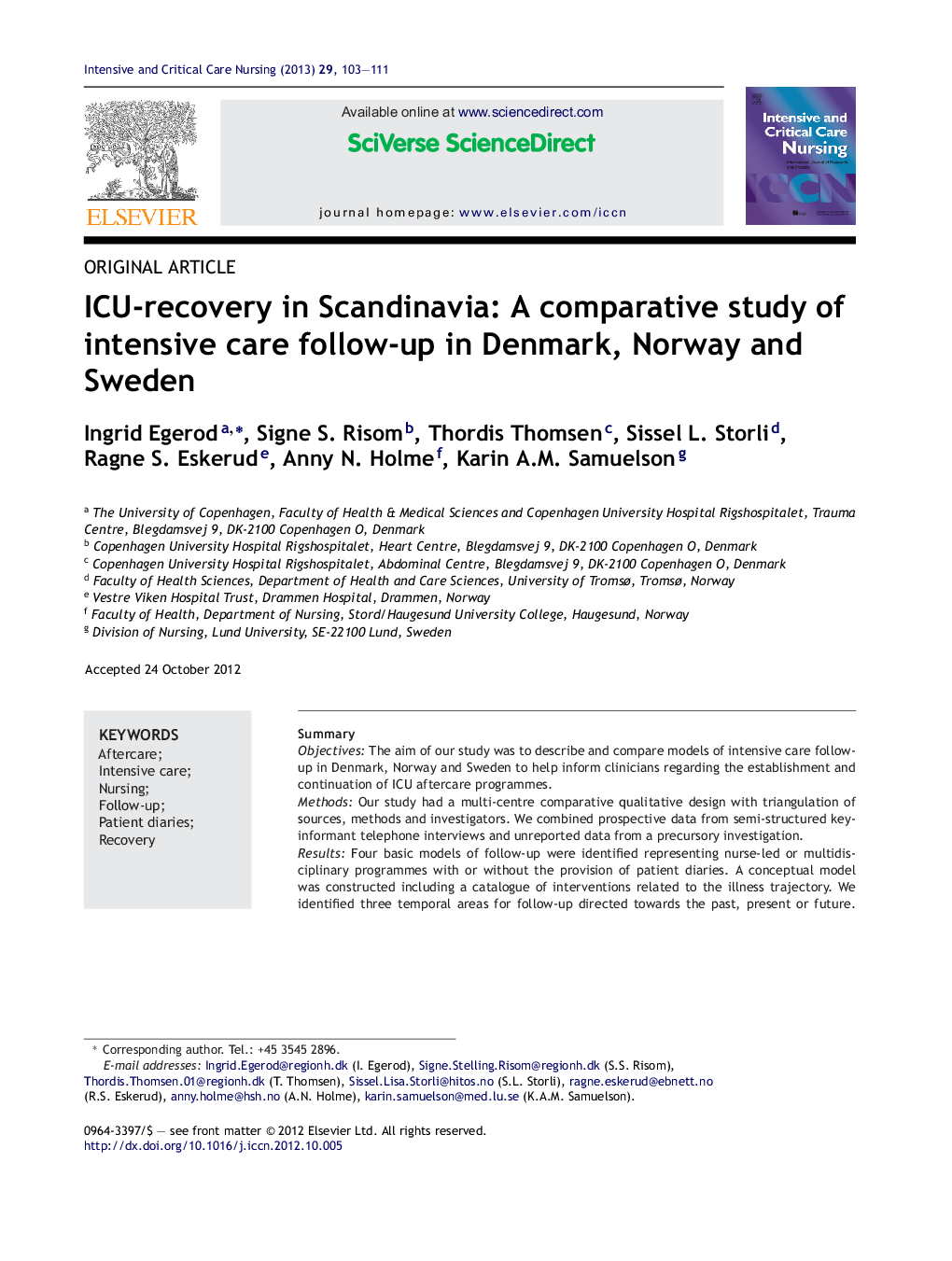| Article ID | Journal | Published Year | Pages | File Type |
|---|---|---|---|---|
| 2652184 | Intensive and Critical Care Nursing | 2013 | 9 Pages |
SummaryObjectivesThe aim of our study was to describe and compare models of intensive care follow-up in Denmark, Norway and Sweden to help inform clinicians regarding the establishment and continuation of ICU aftercare programmes.MethodsOur study had a multi-centre comparative qualitative design with triangulation of sources, methods and investigators. We combined prospective data from semi-structured key-informant telephone interviews and unreported data from a precursory investigation.ResultsFour basic models of follow-up were identified representing nurse-led or multidisciplinary programmes with or without the provision of patient diaries. A conceptual model was constructed including a catalogue of interventions related to the illness trajectory. We identified three temporal areas for follow-up directed towards the past, present or future.ConclusionsICU follow-up programmes in the Scandinavian countries have evolved as bottom-up initiatives conducted on a semi-voluntary basis. We suggest reframing follow-up as an integral part of patient therapy. The Scandinavian programmes focus on the human experience of critical illness, with more attention to understanding the past than looking towards the future. We recommend harmonization of programmes with clear goals enabling programme assessment, while moving towards a paradigm of empowerment, enabling patient and family to take an active role in their recovery and wellbeing.
